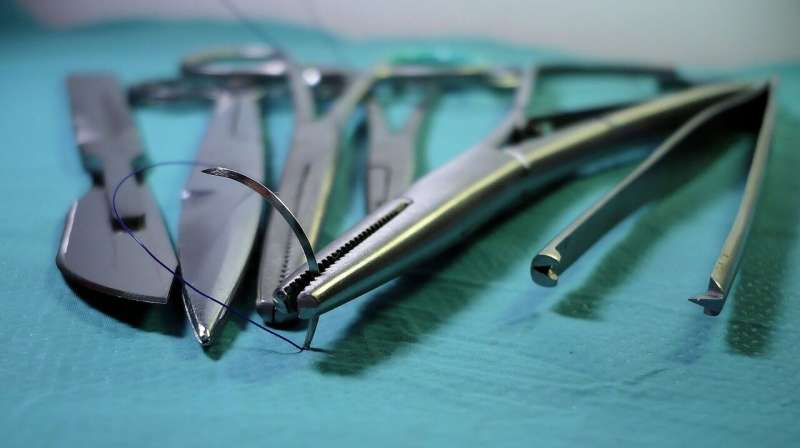This article has been reviewed according to Science X's editorial process and policies. Editors have highlighted the following attributes while ensuring the content's credibility:
fact-checked
trusted source
proofread
Mid-calf nerve block may enable early rehabilitation after foot and ankle surgery while preventing pain

A pilot study conducted at Hospital for Special Surgery (HSS) shows evidence that a mid-calf nerve block is a safe and effective regional anesthetic option for foot and ankle surgeries and may enable faster recovery of motor function of the ankle joint compared with a popliteal block. These findings were presented at the 2023 Spring American Society of Regional Anesthesia and Pain Medicine Annual Meeting.
"This new block provides excellent anesthesia and analgesia to foot and ankle surgeries and preserves motor function of the ankle joint. The results are very promising," said Enrique A. Goytizolo, MD, an anesthesiologist at HSS and senior author of the study. "New protocols of early rehabilitation of foot surgeries can be instituted, since patients have no pain with movement of the foot."
An ultrasound-guided popliteal block is the current standard anesthetic technique for foot and ankle surgeries, but the study findings show that using an ultrasound-guided mid-calf block could enable earlier rehabilitation protocols and an overall faster recovery from surgery.
A popliteal block numbs the sciatic nerve at the level of the popliteal fossa, which is a diamond-shaped space behind the knee joint. A mid-calf block is placed farther down the leg, between the popliteal fossa and the ankle, and numbs the posterior tibial nerve, superficial and deep peroneal nerves, sural, and saphenous nerves. A mid-calf block provides prolonged analgesia for any foot or ankle surgery while preserving motor function of the ankle joint.
Twenty patients who were scheduled to receive foot or ankle surgery at HSS were recruited for the study. The procedures included total ankle replacement, ankle arthroscopy, bunionectomy, cheilectomy, and Achilles tendon repair. Participants were assessed in the post-anesthesia care unit (PACU) and again before discharge to record the time when the mid-calf block ended, presence of paresthesia, and any other side effects. On postoperative days 1, 2, and 7, participants were asked about their pain on a numerical rating score (NRS), their medication use, and other symptoms.
The researchers found that the median duration of analgesia from the mid-calf block was 18.2 hours, with an interquartile range of 4.5–24.0 hours. All 20 patients were able to flex their toes in the PACU.
The average pain score in the PACU was 0.8 +/- 2.1 at rest, and 1.1 +/- 2.3 with movement. Three participants were excluded for sensitivity analysis because they received additional surgery in surgical areas not covered by the mid-calf block. Among the 17 patients in the sensitivity analysis group, these scores were both 0.3 +/- 1.2 at rest and with movement.
"The mid-calf block provides reliable, consistent, and excellent anesthesia and analgesia for foot and ankle surgeries," said Dr. Goytizolo. "Follow-up research and patient treatments following this study should include a fast-track rehabilitation program for patients who have total ankle replacement surgeries with a mid-calf block."
The findings of this study will also inform future randomized control trials on the mid-calf block.
More information: Mid-Calf Block for foot and ankle surgery: A pilot study. epostersonline.com/asraspring2023/node/324



















